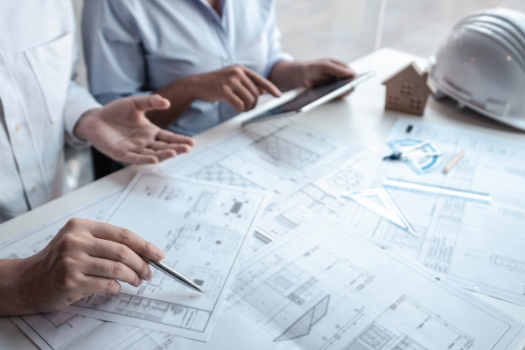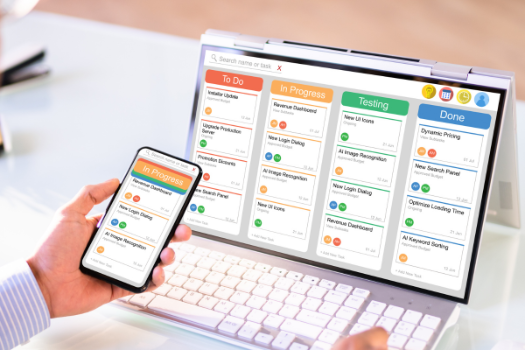.png)
Value Engineering Without Compromise: A Guide for Preconstruction Teams
Value engineering is often misunderstood. Many hear “value engineering” and think “cheap materials” or “cutting corners.” That’s not the goal.
The real goal is this: get more value without losing function or quality.
For preconstruction teams, value engineering is a smart way to cut unnecessary costs before a project even begins. It helps you choose better solutions, faster methods, and smarter materials—without hurting the final outcome.
When done right, it saves time and money. And it keeps clients happy.
This guide will show you how to apply value engineering the right way—without compromising on what matters.

What Is Value Engineering in Preconstruction?
Value engineering (VE) is a process. It helps you get the best value from every dollar spent.
It’s not just about lowering cost. It’s about keeping performance and quality while reducing waste. In construction, this often means finding new ways to do the same job, but better or cheaper.
In preconstruction, VE plays a big role. It starts before anyone sets foot on the job site. At this stage, you have the most control. You can still adjust materials, designs, or timelines without major delays or added costs.
This is where the smartest savings happen.
When you combine strong planning with smart alternatives, you reduce rework and cost overruns later. That’s what value engineering is all about—making better choices early on.
The Value Engineering Process: Step-by-Step
Here’s how value engineering works in five simple steps:
Information Gathering
Learn everything about the project. Know what the client wants, how the design works, and what drives the costs.
Function Analysis
Break the project into parts. Ask: what is each part supposed to do? This helps you spot where money is being spent just for looks, not function.
Idea Generation
Now the team gets creative. Brainstorm ways to deliver the same result with less cost or more value. Think alternative materials, faster methods, or smarter layouts.

Evaluation and Selection
Review the ideas. Which ones save money? Which keep the quality high? Choose the ones that check both boxes.
Development and Presentation
Develop the top ideas into solid recommendations. Present them clearly to the team or the client, with pros, cons, and savings outlined.
When you follow this process, you don’t just “cut costs.” You build smarter from the start.
Collaborative Value Engineering: Engaging Stakeholders
Value engineering isn’t a one-person job. It works best when everyone is involved early—designers, engineers, estimators, and the client.
Why? Because good ideas come from different viewpoints.
Architects might offer new layout options. Estimators can show where labor gets expensive. Engineers know how materials affect performance. And the client can say what’s truly important.
By working together, teams avoid last-minute changes. They spot risks sooner. And they make choices that work for everyone—not just the budget.

Collaboration also builds trust. When clients see you looking for better value (not just lower cost), they’re more likely to approve changes.
So get everyone talking early. That’s when the best value happens.
Best Practices for Effective Value Engineering
Want to get the most out of VE? Follow these best practices:
Start Early
The earlier you do VE, the more options you have. Once building starts, changes get expensive.
Focus on Function
Don’t remove something just because it’s costly. Ask: is this part doing something important? If yes, find a better way—not just a cheaper one.
Look at Long-Term Value
Some materials cost more upfront but last longer. Don’t trade short-term savings for long-term problems.
Keep Design Intent
Respect the architect’s vision and the client’s needs. VE should support the original goals, not fight them.
Document Everything
Write down what was changed, why, and what the impact is. It helps everyone stay on the same page—and keeps decisions accountable.
Review Regularly
Don’t treat VE as a one-time task. Keep reviewing it throughout preconstruction to adjust as needed.
These steps keep quality high and savings real.
How BidLight Helps With Value Engineering
BidLight makes value engineering easy for preconstruction teams.
It helps you collect the right data, fast. You can compare design options, test pricing, and explore better alternatives—all before a shovel hits the ground.
The platform also supports collaboration. Teams can leave notes, tag ideas, and build side-by-side estimates. No messy spreadsheets. No back-and-forth emails.

With BidLight, you spend less time juggling numbers—and more time finding smarter solutions.
It’s the tool that helps you cut cost without cutting quality.
Conclusion: Achieve More With Less
Value engineering isn’t about removing value. It’s about building smarter.
Done right, it protects your quality, your schedule, and your profits. It helps you find the right mix of performance and price—before it’s too late to change.
For preconstruction teams, it’s not optional. It’s essential.
Start early. Work together. Use the right tools. And always focus on function over cost.
That’s how you build better—without compromise.